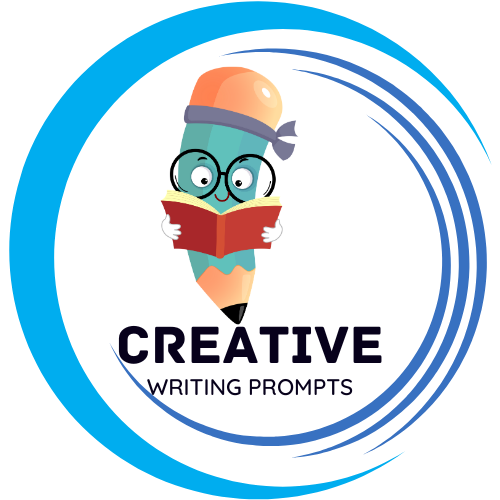As nonprofit organizations strive to make a positive impact in the world, the power of compelling messaging cannot be underestimated. Whether you’re raising funds, increasing awareness, or recruiting volunteers, effective copywriting can help amplify your cause and drive action. Join us as we explore how strategic and impactful messaging can spark change and inspire support for your nonprofit organization.
Contents
- Understanding the Power of Compelling Messaging
- Crafting a Compelling Call to Action for Nonprofit Campaigns
- Utilizing Emotional Appeals to Connect with Your Audience
- The Importance of Storytelling in Nonprofit Copywriting
- Strategies for Effective Communication of Nonprofit Goals
- Maximizing Impact Through Clear and Concise Language
- Tips for Engaging Donors and Supporters Through Copywriting
- Measuring Success: Monitoring and Evaluating the Effectiveness of Your Messaging
- Frequently Asked Questions
- Final Thoughts
Understanding the Power of Compelling Messaging
Effective communication is key in capturing the attention and interest of your audience. Crafting a compelling message involves understanding the power of words and how they can influence emotions and actions. By tapping into the psychology of language, you can create messaging that resonates with your target audience on a deeper level.
Using emotive language and vivid imagery can help evoke a strong emotional response from your audience. By appealing to their senses and emotions, you can create a connection that drives engagement and action. Additionally, using storytelling techniques can help bring your message to life and make it more relatable to your audience. By weaving a narrative that captures their imagination, you can make your message more memorable and impactful.
Crafting a Compelling Call to Action for Nonprofit Campaigns
When creating a call to action for your nonprofit campaign, it’s essential to keep your audience in mind. Consider what will resonate with them and what will motivate them to take action. One effective way to craft a compelling call to action is to create a sense of urgency. By highlighting the immediate impact of their donation or participation, you can encourage supporters to act quickly. Use powerful language that conveys the importance of their involvement, such as “Donate now to provide life-saving support to those in need” or “Join us today to make a difference in our community.”
In addition to creating urgency, it’s important to be clear and specific in your call to action. Clearly outline what action you want your audience to take, whether it’s donating, volunteering, or attending an event. Use concise and direct language that tells supporters exactly what you need from them. For example, “Click here to donate” or “Sign up to volunteer today.” By making it easy for people to understand how they can get involved, you can increase the likelihood that they will take action and support your cause.
Utilizing Emotional Appeals to Connect with Your Audience
Emotional appeals can be a powerful tool in connecting with your audience on a deeper level. By tapping into your audience’s emotions, you can create a strong bond that resonates with them on a personal level. Here are some strategies to effectively utilize emotional appeals:
- Storytelling: Share personal anecdotes or customer success stories to evoke empathy and create a connection with your audience.
- Use of imagery: Visuals can evoke strong emotions. Utilize images or videos that tug at the heartstrings of your audience.
- Empathy: Show your understanding and compassion for your audience’s struggles. Let them know that you are there to support and help them overcome challenges.
By incorporating emotional appeals into your content, you can create a more memorable and impactful message that resonates with your audience. Remember to approach this strategy with authenticity and empathy, as genuine connections are key to building lasting relationships with your audience.
The Importance of Storytelling in Nonprofit Copywriting
When it comes to nonprofit copywriting, storytelling is a powerful tool that can help connect with your audience on a deeper level. By weaving compelling narratives into your copy, you can evoke emotions, inspire action, and create a lasting impact. Stories have the ability to make statistics and facts come alive, creating a more engaging and memorable experience for your readers.
Through storytelling, you can humanize your cause and make it relatable to your audience. By sharing personal anecdotes, success stories, and testimonials, you can showcase the real-life impact of your organization’s work. This helps build trust and credibility with your supporters, as they can see the tangible difference their donations are making. Additionally, stories have the power to inspire empathy and compassion, motivating readers to get involved and make a difference in the world.
Strategies for Effective Communication of Nonprofit Goals
When it comes to effectively communicating nonprofit goals, it is essential to tailor your message to your target audience. Understanding who you are trying to reach and what motivates them will help you craft messaging that resonates. Utilize storytelling as a powerful tool to connect with your audience on an emotional level. Share impactful stories of how your nonprofit has made a difference in people’s lives to create a personal connection.
Another key strategy is to utilize various communication channels to reach a wider audience. From social media platforms to email newsletters and press releases, diversifying your outreach can help increase visibility and engagement. Additionally, **creating clear and concise messaging** that highlights the impact and importance of your nonprofit’s goals will ensure that your audience understands and supports your mission.
Maximizing Impact Through Clear and Concise Language
When it comes to communicating effectively, using clear and concise language is essential for maximizing impact. Whether you’re writing a report, giving a presentation, or crafting a social media post, the way you convey your message can make all the difference in how it is received. By using simple, straightforward language, you can ensure that your audience understands your message easily and is more likely to take action as a result.
One way to achieve clarity and conciseness in your communication is to avoid jargon and overly technical language. Instead, use everyday words that are easy to understand for a wide range of audiences. Additionally, organizing your thoughts into short, to-the-point sentences can help to keep your message focused and impactful. Remember, the goal is not to impress with complex language, but rather to communicate clearly and effectively.
Tips for Engaging Donors and Supporters Through Copywriting
When it comes to engaging donors and supporters through copywriting, it’s important to remember that your words have the power to inspire action. By crafting compelling and heartfelt messages, you can connect with your audience on a deeper level and encourage them to get involved with your cause. One key tip for effective copywriting is to understand your audience and tailor your message to resonate with their values and interests. By speaking directly to their emotions and motivations, you can create a stronger connection and inspire them to take action.
Another important tip is to be clear and concise in your messaging. Keep your copy simple and easy to understand, avoiding jargon or overly complex language. Use powerful and emotive language to convey the urgency and impact of your cause, and don’t be afraid to make a bold statement or ask for support. By being authentic and passionate in your writing, you can inspire donors and supporters to join you in making a difference.
Measuring Success: Monitoring and Evaluating the Effectiveness of Your Messaging
Once you have crafted your messaging strategy, it is crucial to continuously monitor and evaluate its effectiveness to ensure you are reaching your intended audience and achieving your goals. By measuring success, you can make informed decisions on how to adjust your messaging to better resonate with your target demographic.
One way to monitor the effectiveness of your messaging is through analytics tools that track metrics such as website traffic, social media engagement, and email open rates. These insights can give you a clear picture of how your audience is interacting with your messaging and help you identify areas for improvement. Additionally, gathering feedback directly from your audience through surveys or focus groups can provide valuable insights into how your messaging is perceived and what changes could be made to enhance its impact.
Frequently Asked Questions
Q: What is copywriting, and why is it important for nonprofits?
A: Copywriting is the art of writing persuasive and engaging content to communicate a message. For nonprofits, compelling copy can help amplify their cause and inspire action.
Q: How can nonprofits create compelling messaging for their campaigns?
A: Nonprofits can create compelling messaging by understanding their audience, highlighting the impact of their work, and using emotion and storytelling to connect with supporters.
Q: What are some key elements of effective copywriting for nonprofits?
A: Some key elements of effective copywriting for nonprofits include clarity, authenticity, empathy, and a strong call to action that motivates people to get involved.
Q: How can nonprofits use copywriting to raise awareness and funds for their cause?
A: Nonprofits can use copywriting to raise awareness and funds by crafting powerful narratives, showcasing their impact, and making a clear and compelling case for support.
Q: What are some common mistakes to avoid when writing copy for nonprofits?
A: Some common mistakes to avoid when writing copy for nonprofits include being too vague or impersonal, focusing too much on statistics and not enough on storytelling, and using jargon that may not resonate with donors.
Q: How can nonprofits measure the effectiveness of their copywriting efforts?
A: Nonprofits can measure the effectiveness of their copywriting efforts by tracking key metrics such as engagement rates, donation levels, and volunteer sign-ups. They can also solicit feedback from supporters to gauge the impact of their messaging.
Final Thoughts
In conclusion, effective copywriting is critical for nonprofits to better engage with their audience and amplify the impact of their cause.








